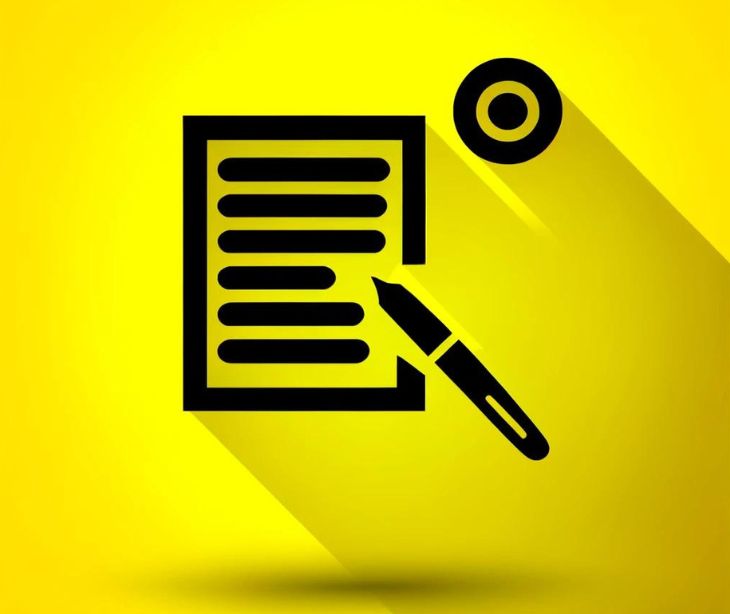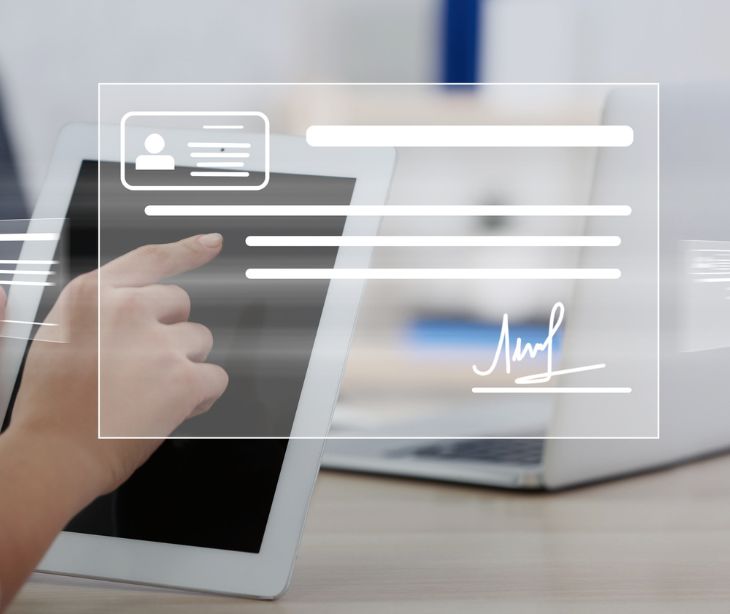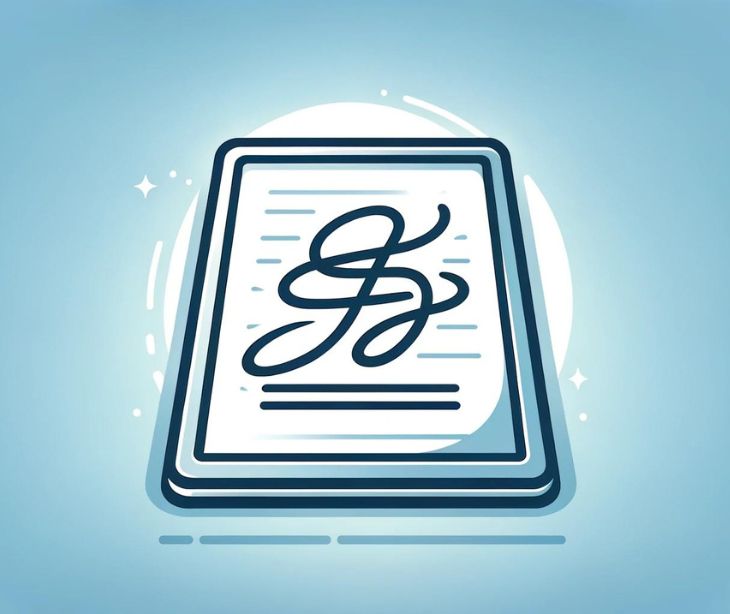
As remote work and digital transactions have increased, the use of e-signatures has become all the more common. In healthcare, e-signatures are incredibly useful because they streamline many processes, making administrative operations faster and more efficient.
What is an e-signature?
A Decision Support System study offers the following definition, "An e-signature consists of e-signature image and digital signature. E-signature is generally associated with a number of technologies, allows a person (or machine) to electronically mark a document, and can enable innovative document management processes."
The concept of e-signatures was first legally defined in the United States with the passage of the Electronic Signatures in Global and National Commerce Act (ESIGN) in 2000, which helped establish the validity and legal effect of electronic signatures. However, the idea and initial technological ideal predate this act.
E-signatures can be created using various methods, including typing a name into a signature field, using a mouse or touchpad to draw a signature, or clicking a button to agree to terms. More sophisticated methods involve cryptographic techniques that ensure the authenticity and integrity of the signature.
The adoption of e-signatures has grown extensively across legal, healthcare, finance, and government industries, largely due to their ability to streamline processes, reduce paper use, and enhance security.
See also: How to send HIPAA compliant patient forms
Are e-signatures HIPAA compliant?
An electronic signature, or e-signature, can be HIPAA compliant, but this compliance isn't automatic. For an e-signature to meet HIPAA requirements, it must meet specific conditions to protect the privacy and security of health information. Not all e-signature technologies are suitable for use in healthcare settings involving patient information.
These requirements include:
- An e-signature solution must ensure that data cannot be altered after applying the signature.
- There must be the ability to verify the identity of the signer.
- There should be detailed logs of all e-signature activity.
- Encryption should be present for the document transmissions and storage to protect against unauthorized access.
- The provider must provide a business associate agreement (BAA).
Does Paubox forms use e-signatures?
Based on a recent Paubox article on its Paubox Forms feature: "Require form fillers to provide a signature. Choose between the option to request a signature drawing or a typed signature."
Yes, Paubox Forms does use e-signatures. The signature collection feature in Paubox Forms allows form fillers to provide a signature, either by drawing or typing it. Paubox, as a company, offers HIPAA compliant email services, and its Paubox Forms product is designed to collect patient data securely.
Specific Paubox features that make it HIPAA compliant include:
- Encryption: All data, including e-signatures, is encrypted during transmission and when stored.
- Access controls: Only authorized users can access the e-signature feature and the data it processes.
- Audit trails: Detailed logs are maintained to track who signed documents and when.
- Secure email integration: The e-signature feature is integrated with Paubox Email Suite, which complies with HIPAA's secure email communication requirements.
- Comprehensive compliance: Paubox adheres to all necessary HIPAA regulations, ensuring that all features, including e-signatures, meet compliance standards.
By using Paubox Forms, healthcare providers can streamline the data collection processes.
How e-signatures are used
- E-signatures are used to collect consent from patients for various medical procedures.
- Patients can use e-signatures to authorize the release of their medical records to other healthcare providers or third parties.
- E-signatures facilitate submitting insurance claims and other billing documents, speeding up reimbursements and reducing paperwork.
- With the rise of telehealth, patients use e-signatures to sign treatment agreements or consent forms remotely.
- Healthcare providers can use e-signatures to approve prescription orders digitally, which helps maintain continuity of care.
- E-signatures are employed to obtain consent from participants in clinical trials.
- Healthcare facilities use e-signatures for HR-related documents, including employment contracts, onboarding paperwork, and policy acknowledgments by staff.
How e-signatures are typically obtained
Electronic Health Record (EHR) systems: Many EHR systems have integrated e-signature capabilities, allowing healthcare providers and patients to sign documents directly within the system.
Secure email platforms: Emails that comply with HIPAA security standards are used to send and receive documents that can be electronically signed.
Dedicated e-signature solutions: Specialized software solutions designed for secure electronic signatures are often used. These platforms ensure compliance with legal standards and offer additional features like verification and audit trails.
Telehealth applications: With the rise of telemedicine, telehealth platforms frequently incorporate e-signature tools to facilitate signing consent forms and medical documents during virtual visits.
Legislation to know
Health Insurance Portability and Accountability Act (HIPAA)
According to HHS guidance: "HIPAA does not require the use of electronic signatures. This particular capability, however, would be necessary for a completely paperless environment. Certain features of the digital signature type of electronic signature make this particular system the most desirable. Only digital signatures, using current technology, provide the combination of authenticity, message integrity, and nonrepudiation which is viewed as a desirable complement to the security standards required by the law."
HIPAA safeguards patient health information, ensuring it is handled with care to maintain privacy and security. It sets standards for electronic health data protection. HIPAA influences the use of e-signatures in healthcare by requiring that they uphold high-security standards to protect patient data.
Electronic Signatures in Global and National Commerce Act (ESIGN Act)
"The Electronic Signatures in Global and National Commerce Act, 15 USC § 7001, et seq., (E Sign Act), signed into law June 30, 2000, provides a general rule of validity for electronic records and signatures for transactions in or affecting interstate or foreign commerce. The E Sign Act allows the use of electronic records to satisfy any statute, regulation, or rule of law requiring that such information be provided in writing, if the consumer has affirmatively consented to such use and has not withdrawn such consent."
The ESIGN Act ensures that electronic signatures and records are legally valid and enforceable across the US, just like traditional handwritten signatures and paper documents. This act directly impacts e-signatures by affirming their legal status in every sector, encouraging digital transactions and electronic documentation while ensuring they hold up in legal contexts.
Uniform Electronic Transactions Act (UETA)
"It is important to understand that the purpose of the UETA is to remove barriers to electronic commerce by validating and effectuating electronic records and signatures."
UETA establishes the legality of electronic agreements and signatures, making them as legally binding as their paper equivalents. This supports using e-signatures by guaranteeing they are recognized legally, provided all parties have agreed to conduct transactions electronically. This act bolsters the legal framework provided by the ESIGN Act, focusing on transactions at the state level.
Food and Drug Administration (FDA) Regulations
"Under the narrow interpretation of the scope of part 11, with respect to records required to be maintained under predicate rules or submitted to FDA, when persons choose to use records in electronic format in place of paper format, part 11 would apply."
FDA regulations ensure that drugs, medical devices, and food products are safe and effective. They set the standards for product approval and monitoring. The regulations include specific rules about using electronic records and e-signatures in industries it oversees. These rules, particularly under Title 21 CFR Part 11, require that e-signatures are reliable and verifiable to ensure they are as trustworthy as handwritten signatures in regulated environments.
The benefits of using e-signatures
- Reduced no-show rates: By allowing patients to sign pre-appointment paperwork electronically, healthcare providers can ensure better preparation and commitment from patients.
- Immediate drug prescriptions: E-signatures enable doctors to sign and send electronic prescriptions instantly to pharmacies. T
- Facilitation of emergency authorizations: In urgent medical scenarios, e-signatures can quickly secure consent from family members or patients.
- Improved multi-site management: For healthcare systems with multiple locations, e-signatures allow for uniformity in document processes across all sites.
- Accessibility for disabled patients: E-signatures can be particularly beneficial for patients with physical disabilities who might find it difficult to handle paper documents and provide a traditional signature.
- Remote clinical trial consents: For clinical trials, e-signatures facilitate obtaining informed consent from participants located remotely.
- Automated document routing: E-signature solutions often include features that automatically route signed documents to the appropriate next stage in a workflow, such as billing departments or medical records.
- Improved legal and audit readiness: E-signatures come with time-stamped audit trails that provide detailed historical records of who signed a document and when.
- Support for mobile health teams: Mobile health services, such as home care providers, can use e-signatures to document patient visits and treatments on the go.
The use of signatures in HIPAA compliant email
E-signatures offer a seamless way to expedite healthcare procedures, from admissions to discharge and follow up care, thereby reducing administrative delays. However, for electronic signatures to be truly effective, they need to be used within the scope of secure and established HIPAA compliance protocols and HIPAA compliant email. When used correctly, they eliminate the need for physical presence, enabling patients to manage their healthcare remotely. This is particularly beneficial for those with mobility challenges or those living far from their healthcare providers.
See also: Top 12 HIPAA compliant email services
FAQs
Are e-signatures legally binding in healthcare?
Yes, e-signatures are legally binding.
Are there any documents that cannot be signed electronically in healthcare?
While most documents can be signed electronically, certain highly sensitive documents or those requiring a notary public might still require a traditional handwritten signature.
Can e-signatures be used across state lines or internationally?
E-signatures are legally recognized in most jurisdictions around the world.
Subscribe to Paubox Weekly
Every Friday we'll bring you the most important news from Paubox. Our aim is to make you smarter, faster.




